Mussels
By Mike on Sunday, August 22, 2010, 15:01 - Permalink
 On my holiday in the Highlands of Scotland, I found huge clusters of mussels on the rocks well below the tideline, including some really big ones.
On my holiday in the Highlands of Scotland, I found huge clusters of mussels on the rocks well below the tideline, including some really big ones.
What Are Mussels?
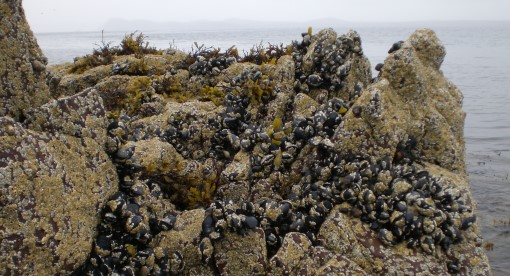
Mytilus edulis - the common or blue mussel is a bivalve mollusc that is found most commonly attached to rocks or other objects well below the tideline.
They feed by filtering suspended particles of food (such as plankton) from the water in which they live - for this reason, they are prone to accumulating toxins and pollutants - so they should only be gathered from clean, unpolluted waters, away from outfalls and densely populated areas.
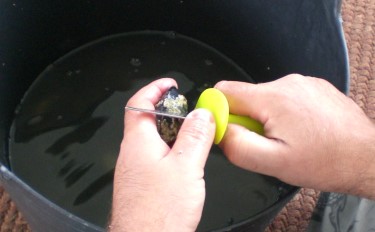 I gathered a couple of kilos of mussels - I went for the really big ones (which turned out to be a mistake - but an interesting one - read on).
I gathered a couple of kilos of mussels - I went for the really big ones (which turned out to be a mistake - but an interesting one - read on).
They were heavily encrusted with barnacles, which I scraped off with my oyster knife, which has a really stout blade that isn't so razor sharp as to present a hazard to the fingers.
Muscular
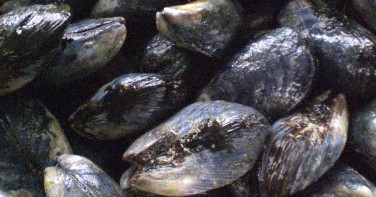 These are the biggest, strongest-looking mussels I've ever seen.
These are the biggest, strongest-looking mussels I've ever seen.
Now to cook them...
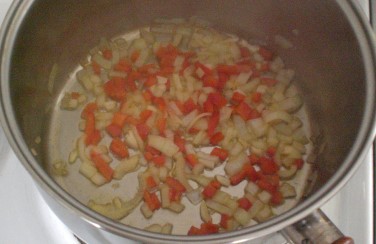 I finely diced a small onion, some red pepper and a couple of cloves of garlic, then gently simmered this with a little oil and some herbs in a large pan.
I finely diced a small onion, some red pepper and a couple of cloves of garlic, then gently simmered this with a little oil and some herbs in a large pan.
Once the onion had softened, I turned the heat right up, tipped in the mussels and added some dry cider and put the lid on (white wine would have been my preference, but I had none to hand).
I gave the pan a shake every minute or so to make sure they all got evenly cooked.
 In just a few minutes, they were done - evidenced by the shells all popping open.
In just a few minutes, they were done - evidenced by the shells all popping open.
And they were delicious. The traditional way to eat them is to use an empty pair of shells like tweezers to pick the meat out of the others.
They need little or no additional seasoning - as they contain quite a bit of salty juice when cooked - this combines with the other ingredients to make a tasty broth which is good mopped up with crusty bread.
A Surprise
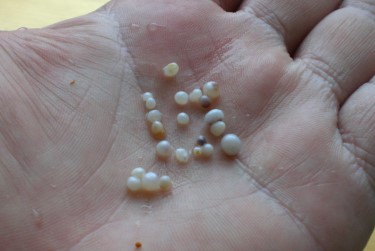 They were somewhat gritty to eat though.
They were somewhat gritty to eat though.
At first, I thought this must just be pieces of environmental grit they had accumulated, but it wasn't.
It was mussel pearls. Loads of them.
Oh, they're worthless, of course. The largest of them is maybe 4mm across and they're not as lustrous (nor, I suspect, as durable) as oyster pearls, but still, they're quite pretty and interesting.
Mussel Pearls
The pearls were all found embedded in the mantle of the mussels (the bit that appears as an orange outer covering when you're eating them.
They're formed when the mantle is injured or invaded by a microscopic parasite, or (only occasionally, contrary to popular belief) when a grain of sand or grit gets stuck. The animal responds by secreting layers of shell or shell lining material and these build up to form the rounded shape of the pearl.
It stands to reason that the longer the mussel lives, the more likely it is that this will occur - so the huge specimens I gathered were probably not the best candidates for the pot - I verified this by picking some smaller, younger mussels later in the week - and I found these to be almost completely free of grit.
Highland Wild Food
This article is one of a series on wild foodstuffs foraged on holiday in the Wester Ross area of the Scottish Highlands in 2010 - click on the Highland tag in the side column to see others in the series.
